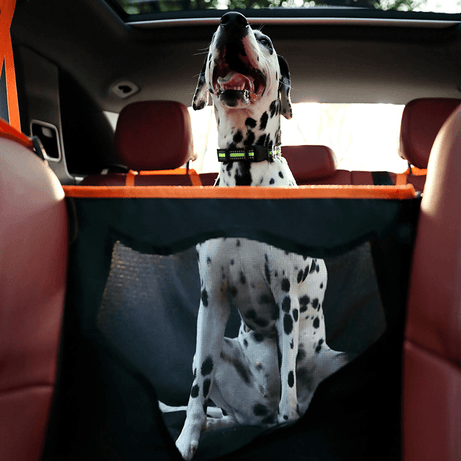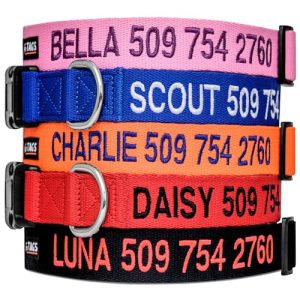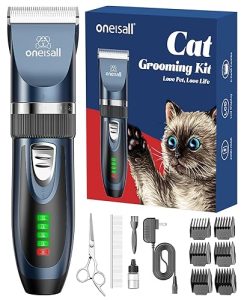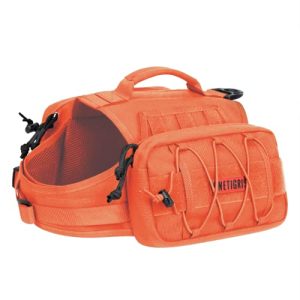Does your dog get nervous or restless every time you hop into the car? You’re not alone, and the good news is you can help your furry friend feel calm and safe during car rides.
Imagine turning stressful trips into peaceful journeys where your dog actually enjoys the ride. You’ll discover simple, effective ways to ease your dog’s anxiety in the car. Keep reading, because the solution to a happier, more relaxed pet is closer than you think.
Causes Of Car Anxiety In Dogs
Many dogs feel uneasy during car rides. This anxiety can cause stress for both dogs and their owners. Understanding what causes this fear is key to helping your dog relax.
Car anxiety in dogs can come from different sources. These include past bad experiences, motion sickness, or unfamiliar sounds and movements.
Common Triggers
Certain things in the car can make dogs nervous. These triggers often cause fear or discomfort during rides. Knowing these helps you reduce your dog’s stress.
- Loud engine noise or sudden sounds
- Motion sickness from the car’s movement
- Being confined in a small space
- Previous bad car experiences or accidents
- Unfamiliar smells and sights outside the window
- Separation from home or family members
Signs To Watch For
Dogs show anxiety in different ways. Watching for these signs helps you notice when your dog is stressed in the car.
Some signs are easy to spot. Others might be small changes in behavior or body language.
- Whining or barking during the ride
- Pacing or trying to escape
- Excessive drooling or panting
- Trembling or shaking
- Refusing to get in the car
- Yawning or licking lips repeatedly
- Hiding or cowering in the car
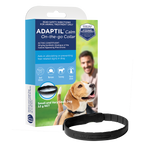
Credit: www.adaptil.com.au
Preparing Your Dog For Car Rides
Many dogs feel nervous during car rides. It is important to prepare them well to reduce anxiety. A calm dog makes travel safer and more fun for everyone.
Getting your dog used to the car before long trips helps them stay relaxed. Use gentle steps to help your dog feel safe and comfortable.
Gradual Exposure Techniques
Start by letting your dog explore the car while it is parked. Let them sniff and sit inside without moving the car. Give treats and praise to create a positive feeling.
Slowly increase the time your dog spends in the car. Begin with short rides around the block. Watch your dog’s reactions and stop if they seem too stressed.
- Let your dog explore the car without starting it
- Take short trips in calm environments
- Reward calm behavior with treats and praise
- Gradually increase trip length over days or weeks
Creating A Comfortable Space
Make the car a safe place for your dog. Use a soft bed or blanket where they can sit or lie down. Familiar smells from home help your dog feel secure.
Keep the car cool and quiet. Avoid loud music or sudden noises. Secure your dog safely with a harness or crate to prevent injury and give them a sense of safety.
- Use a soft bed or blanket with your dog’s scent
- Keep the temperature comfortable inside the car
- Limit loud sounds and sudden noises
- Secure your dog with a harness or crate
Calming Products And Tools
Many dogs feel anxious when riding in a car. Calming products and tools can help reduce this stress. Using the right items makes car trips easier for your dog.
These tools work by soothing your dog’s mind and body. They create a calm environment and help your dog feel safe.
Use Of Anxiety Wraps
Anxiety wraps gently hug your dog’s body. This pressure can calm nerves and reduce fear. Dogs often feel safer with the gentle touch.
Wraps are easy to use in the car. Put the wrap on before the trip to help your dog relax quickly.
- Wraps apply gentle pressure like a hug
- They can lower heart rate and stress levels
- Fits snugly but does not restrict movement
- Good for dogs with mild to moderate anxiety
Calming Sprays And Diffusers
Calming sprays release scents that soothe dogs. Diffusers spread these smells in the car for a calm space. These products use natural smells that dogs find relaxing.
Use sprays on your dog’s blanket or car seat. Plug in a diffuser before the trip to keep the air calm.
- Common scents include lavender and chamomile
- Help reduce barking and restlessness
- Safe when used as directed
- Works best in a small, enclosed space like a car
Soothing Music And Sounds
Soft music or calming sounds can ease your dog’s anxiety. These sounds cover up loud noises from outside the car. Music with slow rhythms helps dogs feel peaceful.
Play soothing tracks before and during the drive. Keep the volume low to avoid startling your dog.
- Classical music or nature sounds work well
- Helps distract dogs from stressful noises
- Creates a relaxing atmosphere in the car
- Can improve your dog’s mood during travel
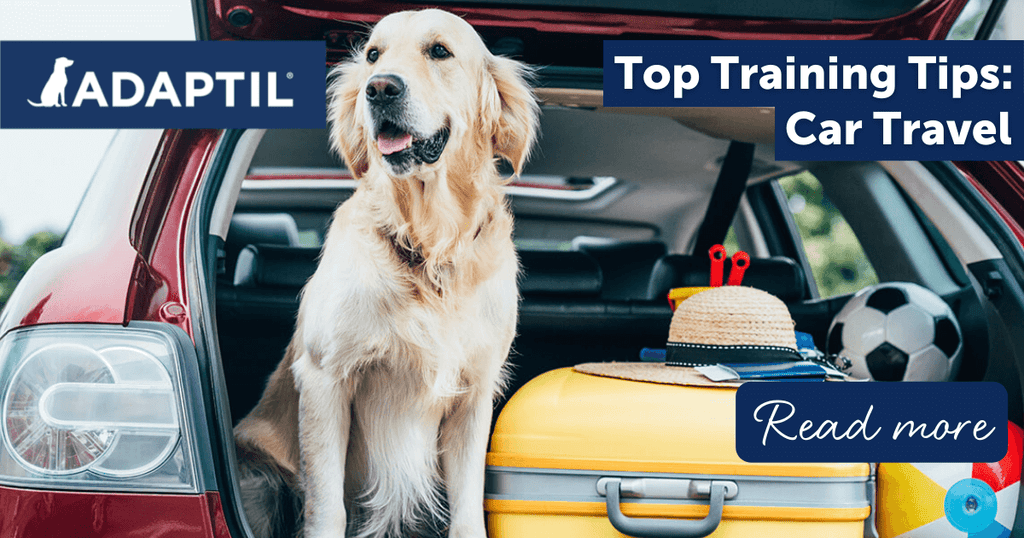
Credit: www.adaptil.co.uk
Behavioral Training Tips
Many dogs feel anxious during car rides. Training can help reduce this stress.
Behavioral training focuses on teaching your dog to stay calm in the car. It uses rewards and distractions to change their feelings.
Positive Reinforcement
Positive reinforcement means giving your dog treats or praise for calm behavior. This helps them link car rides with good things.
Start by giving treats when your dog enters the car. Gradually reward calm behavior during short trips.
- Offer treats before and during the ride
- Use a calm, happy voice to praise
- Give a favorite toy as a reward
- Stop the car for breaks and reward calmness
Distraction Methods
Distractions help take your dog’s mind off the ride. Toys, music, or chew items can keep them busy.
Try playing soft music or giving your dog a special chew toy only used in the car. This creates a positive focus.
- Bring a favorite chew toy or bone
- Play calming music during the trip
- Offer puzzle toys to keep your dog busy
- Talk softly to comfort your dog
Health And Safety Considerations
Traveling with a dog can cause anxiety and stress for your pet. Keeping your dog safe and calm during car rides is very important. Knowing the right steps helps protect your dog’s health.
Understanding the health and safety factors can make trips easier for both you and your dog. This guide covers key points about working with a vet and choosing safe travel gear.
Consulting A Veterinarian
Talk with your veterinarian before traveling if your dog has anxiety. They can check your dog’s health and suggest treatments or medicines. This helps reduce stress and keep your dog calm in the car.
- Discuss any anxiety symptoms your dog shows.
- Ask about safe calming medications or supplements.
- Get advice on how to prepare your dog for travel.
- Learn about signs of motion sickness and how to handle it.
Safe Travel Accessories
Using the right accessories can protect your dog and lower anxiety during car rides. A few simple tools help keep your dog secure and comfortable.
| Accessory | Purpose | Safety Tip |
| Dog Seat Belt | Secures your dog in one place | Use a harness, not a collar |
| Crate or Carrier | Provides a safe space for your dog | Choose the right size for comfort |
| Non-Slip Mat | Prevents sliding on car seats | Place under crate or dog bed |
| Window Shades | Blocks bright sunlight and wind | Install on side windows |

Credit: julibees.com
Frequently Asked Questions
How Can I Calm My Dog’s Car Anxiety Quickly?
Use calming treats or sprays designed for dogs. Play soothing music and maintain a calm tone. Gradually expose your dog to car rides to build comfort.
What Are Common Signs Of Dog Anxiety In Cars?
Signs include panting, whining, shaking, drooling, and restlessness. Dogs may also try to escape or refuse to enter the vehicle.
Are There Specific Products To Reduce Dog Car Anxiety?
Yes, products like anxiety wraps, calming collars, and pheromone sprays help. Consult your vet for safe, effective options tailored to your dog’s needs.
How Long Does It Take To Reduce Car Anxiety In Dogs?
It varies but often takes several weeks of consistent exposure. Patience, gradual desensitization, and positive reinforcement are key to success.
Conclusion
Helping your dog feel calm in the car takes time and care. Use gentle steps and stay patient. Small changes make a big difference. Keep rides short and happy at first. Praise your dog often for good behavior. Avoid rushing the process.
Trust grows with each calm trip. Soon, car rides can become a fun part of your routine. Keep these tips handy and watch your dog enjoy the journey more.

Emily Barker is the founder of ChillDogLife.com, a space dedicated to helping pup parents discover the best dog products, lifestyle tips, and cozy ideas for happier homes.
A lifelong dog lover, Emily combines her passion for pets with a knack for research to share trusted recommendations on everything from toys and furniture to health and everyday care.
Her goal is simple: to make life easier, stylish, and more joyful for dogs and the people who love them.
